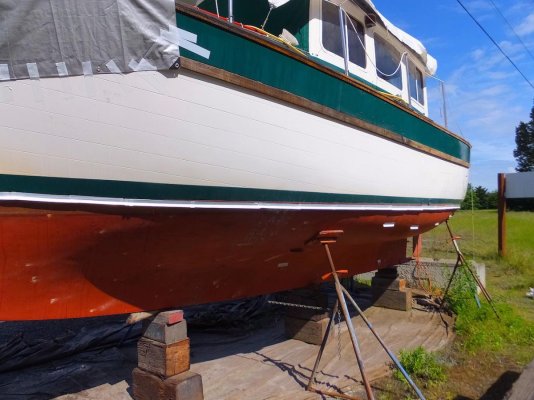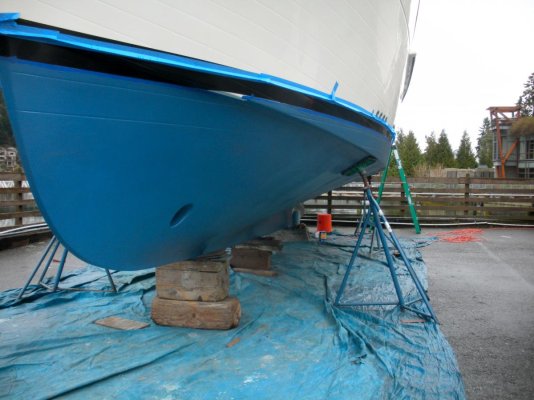Nomad Willy
Guru
This spring I made little eves to keep the rainwater from running down the hull sides and into the blisters that I ground out last fall.
I used a very sticky 2" wide white tape made in Canada and sections of small quarter round. Just the foam type found in Home Depot. I found a very small amount of dampness under one eave so the seal wasn't 100% but very close. Soon we'll put green 3M epoxy filler in the blisters and hopefully they will be very dry.
I submit this as a possible method for others to keep rainwater out of their blisters while sitting outside.
I used a very sticky 2" wide white tape made in Canada and sections of small quarter round. Just the foam type found in Home Depot. I found a very small amount of dampness under one eave so the seal wasn't 100% but very close. Soon we'll put green 3M epoxy filler in the blisters and hopefully they will be very dry.
I submit this as a possible method for others to keep rainwater out of their blisters while sitting outside.


